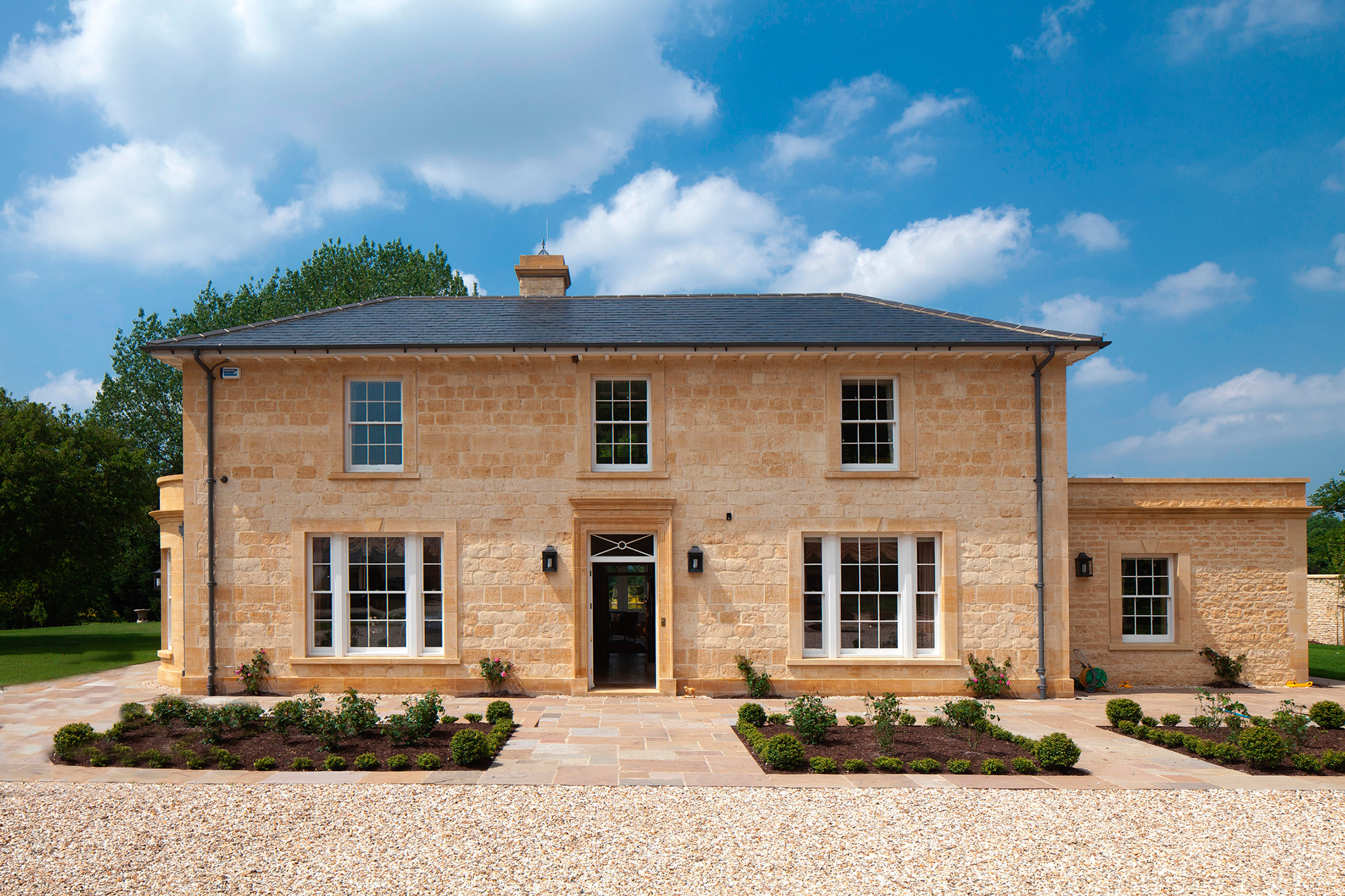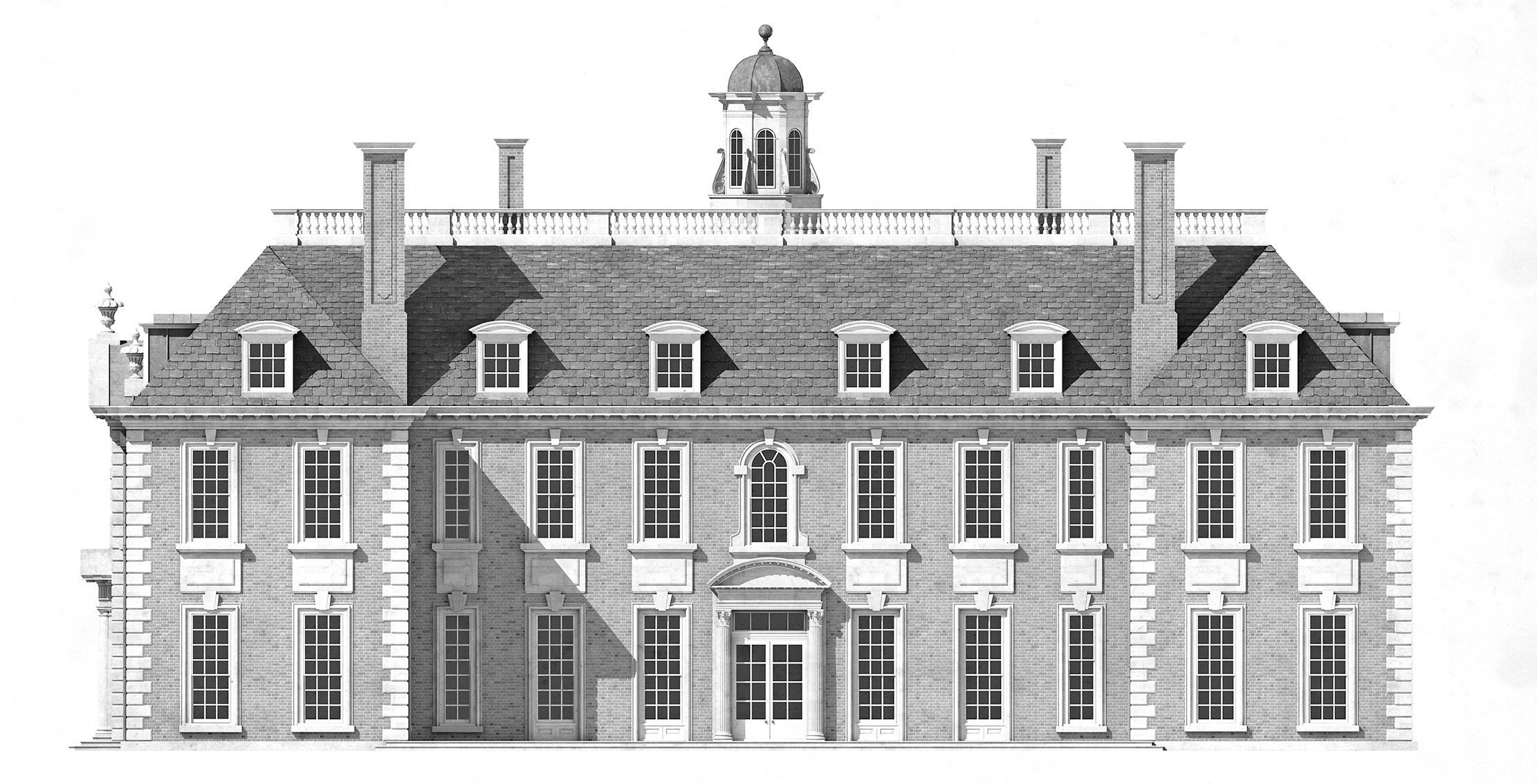What you need to know if you're building a new house from scratch
Building a house requires everything from planning to patience, says Arabella Youens.


Choose the architect
The process can begin from some desktop research — and the annual Country Life Top 100 is a good place to start. Look through the work of Britain's best architects and earmark practices that appeal. ‘You want to play to their strengths, so there’s little point commissioning a modern masterpiece from a practice that usually works with traditional designs,’ recommends Rupert Cunningham, a director at architectural practice Ben Pentreath. ‘Then meet the principal or one of the directors to see if they are a good fit.’
If there’s a plan to sell the house in the future, be cautious about designing something too outlandish, adds Ross Sharpe of Yiangou Architects. ‘Highly architectural projects that we as architects like may only have a limited number of admirers within the buying public, so it’s worth seeking advice about the layout and design from estate agents.’
The right location
Although the temptation is to focus on the needs of today, a certain amount of crystal-ball gazing needs to be factored into the process of building a new family house. For example, consider the location carefully, recommends Jonathan Dinnewell of Smallwood Architects. ‘Does it allow easy access to infrastructure and nearby facilities? A secluded spot might seem perfect to raise young children, but be prepared to have to ferry them miles to and from school or extra activities.’
Planning the layout
‘Designing should be like a Rubik’s Cube, with everything fitting together,’ suggests Philippa Thorp, founder of Thorp Design. Doing this well avoids ending up with rooms that aren’t used or big empty corridors that need heating. ‘You want to avoid walking miles around the kitchen and connect spaces that allow all ages to live together, but separately. It’s an art and requires a lot of consideration and thought.’
After years of open-plan layouts, houses are becoming more cellular in design and each room’s function needs to be carefully considered. ‘The future for dining rooms is far from certain,’ adds Hugh Petter of ADAM Architecture. ‘Whereas there was once a formal and family side of the house, that distinction is diminishing now.’
In the post-covid world, the need for quiet spaces to work at home — both for parents and children — has become ever greater. Cinema rooms are on the rise, as are gyms or yoga studios. ‘We’ve recently designed a number of indoor pools with moveable floors on electric jacks so that they can be raised and turned into party spaces,’ adds Mr Petter. ‘Rooms are being used more intensively than ever before.’
It’s also sensible to have a space on the ground level that’s comfortable to spend time in, believes Mr Dinnewell. ‘It might start off as a playroom, but could become a spare bedroom should someone break a leg or if access needs change.’
Sign up for the Country Life Newsletter
Exquisite houses, the beauty of Nature, and how to get the most from your life, straight to your inbox.

A masterplan
Develop a masterplan that shows the house in the context of its site and any ancillary buildings, pools and landscaping. ‘Although all areas may not be achievable in one phase, it helps to futureproof the development with the right strategy from the start,’ says Tim Moulding of R. Moulding & Co, one of Britain's best builders. Annexes — that morph between accommodating a granny flat, boomerang children or a holiday cottage — are another consideration. ‘We’re increasingly seeing clients renting out these spaces on Airbnb when they aren’t in use, but then taking them back into the fold when the wider family or friends descend for Christmas and birthdays,’ says Mr Petter.
Commission a schematic
This design, typically done with CAD (computer-aided design, which creates 2D drawings and 3D models), will allow you to review the position of the house, the internal layout and external elevations, as well as schedule all the detailing, such as the position of sockets and doors. ‘This is money well spent,’ says Mr Cunningham. ‘Many people struggle to read architectural drawings, but this will really produce a visual of the house and iron out any problems at the start — the most expensive thing to do is to make a change mid build.’
Another tip is not to start building until all the architectural drawings and schedules are finalised and every cost envisaged. ‘Many want to start too early, but that puts the cart before the horse from where costs only escalate,’ says Mrs Thorp.
Be patient
Building a new country house is not a quick process — it will take years. The same is true when re-modelling a listed building, adds Mr Sharpe. One of the most significant hold-ups currently is securing planning, particularly in England. What, before the pandemic, used to take a matter of eight weeks, and sometimes a few more, now drags out over several months and even years.
‘The path of least resistance is the knock-down-and-rebuild route,’ explains Mr Cunningham. ‘But even when you’re presenting a project that lies within policy of the relevant local authority, the planning system is now a shambles. We have projects that have been waiting more than a year for a green light and our hands are totally tied.
‘My advice for those who need to be in the house within a two-year window is that this isn’t the route to take; you are much better off to buy something that’s already built.’
Be realistic
A considerable number of projects will go down the route of securing planning (eventually) and then fall apart because of costs. Architects aren’t always good at predicting build costs: ‘If there’s an optimism bias in the world, it’s held by clients and then by architects in that order,’ says Mr Pentreath. It’s imperative to consult a quantity surveyor to develop a fully priced plan for the project.
Building a new country house isn’t cheap — particularly in the current climate. ‘Be realistic about the costs, and then add a bit more,’ recommends Mr Cunningham. Volume builders, even those of ‘executive homes’, may be able to build for £250 to £350 per sq ft, but a bespoke new house will cost significantly more, says Mr Sharpe.

Control the budget
There are two ways to control the cost of a building: size and specification, including the materials and internal finishes. ‘It’s rather like buying a suit. They all look much the same on the outside, but the cut, preparation, extent of hand work and degree of craft will influence the price dramatically,’ adds Mr Pentreath.
Running costs
From electric-vehicle chargers installed at the outset to photovoltaic panels and ground-source heat pumps, figuring out how the energy supply and source needs to happen from day one. ‘This wouldn’t have appeared in my top three pieces of advice 10 years ago, which shows how much has changed,’ says Mr Moulding. ‘But, nowadays, you need to develop an energy strategy for the entire site that includes renewable solutions.’
Green solutions are expensive, with long payback times, warns Mrs Thorp. ‘My experience to date is that most people don’t choose to go down this road once they’ve done the maths unless they are expecting to live in the house for a long time.’
Do it
If there’s the desire, and means, to design a new house, few will ever regret taking on such a project, says Mr Cunningham. ‘The result will be a bespoke and beautiful house that should bring joy to the family in years to come.’
-
 Two quick and easy seasonal asparagus recipes to try this Easter Weekend
Two quick and easy seasonal asparagus recipes to try this Easter WeekendAsparagus has royal roots — it was once a favourite of Madame de Pompadour.
By Melanie Johnson Published
-
 Sip tea and laugh at your neighbours in this seaside Norfolk home with a watchtower
Sip tea and laugh at your neighbours in this seaside Norfolk home with a watchtowerOn Cliff Hill in Gorleston, one home is taller than all the others. It could be yours.
By James Fisher Published
